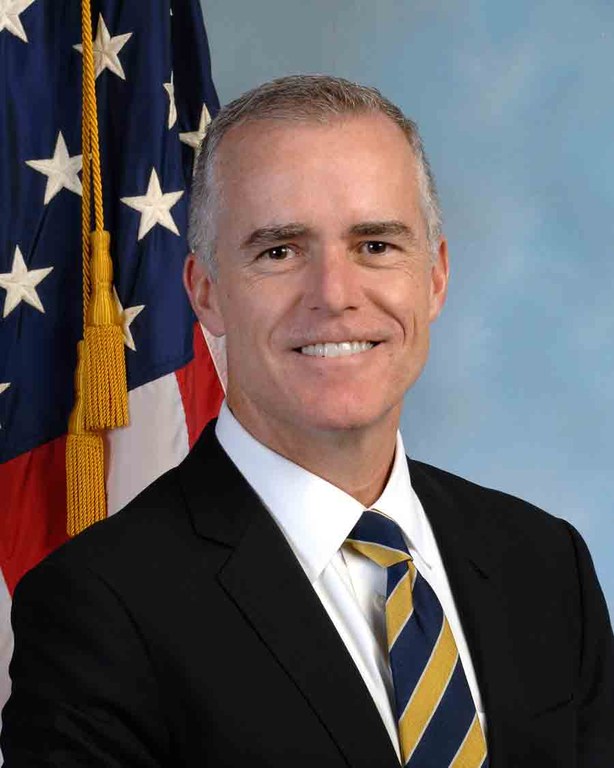Our parent organization, the American Analysis of News and Media, Inc., was formed to provide timely and thorough news analysis to the public. Far too often, news organizations “filter” information through their own ideological lens. On occasion, to accomplish this goal, we provide, without editorial comment, key reports issued by government agencies. We do so again today. Andrew McCabe was the former Deputy Director of the FBI. He was fired for misconduct by Attorney General Jeff Sessions.
The U.S. Department of Justice’s Office of the Inspector General has released its report of the investigation of the allegations against concerning former FBI Deputy Director Andrew McCabe.
This the official summary of the findings:
This misconduct report addresses the accuracy of statements made by thenFederal Bureau of Investigation (FBI) Deputy Director Andrew McCabe to the FBI’s Inspection Division (INSD) and the Department of Justice (Department or DOJ) Office of the Inspector General (OIG) concerning the disclosure of certain law enforcement sensitive information to reporter Devlin Barrett that was published online in the Wall Street Journal (WSJ) on October 30, 2016, in an article entitled “FBI in Internal Feud Over Hillary Clinton Probe.” A print version of the article was published in the WSJ on Monday, October 31, 2016, in an article entitled “FBI, Justice Feud in Clinton Probe.”
This investigation was initially opened by INSD to determine whether the information published by the WSJ in the October 30 article was an unauthorized leak and, if so, who was the source of the leak. On August 31, 2017, the OIG opened an investigation of McCabe following INSD’s referral of its matter to the OIG after INSD became concerned that McCabe may have lacked candor when questioned by INSD agents about his role in the disclosure to the WSJ. Shortly before that INSD referral, as part of its ongoing Review of Allegations Regarding Various Actions by the Department and the FBI in Advance of the 2016 Election, the OIG identified FBI text messages by McCabe’s then-Special Counsel (“Special Counsel”) that reflected that she and the then-Assistant Director for Public Affairs (“AD/OPA”) had been in contact with Barrett on October 27 and 28, 2016, and the OIG began to review the involvement of McCabe, Special Counsel, and AD/OPA in the disclosure of information to the WSJ in connection with the October 30 article.
In addition to addressing whether McCabe lacked candor, the OIG’s misconduct investigation addressed whether any FBI or Department of Justice policies were violated in disclosing non-public FBI information to the WSJ.
The OIG’s misconduct investigation included reviewing all of the INSD investigative materials as well as numerous additional documents, e-mails, text messages, and OIG interview transcripts. The OIG interviewed numerous witnesses, including McCabe, Special Counsel, former FBI Director James Comey, and others.
As detailed below, we found that in late October 2016, McCabe authorized Special Counsel and AD/OPA to discuss with Barrett issues related to the FBI’s Clinton Foundation investigation (CF Investigation). In particular, McCabe authorized Special Counsel and AD/OPA to disclose to Barrett the contents of a telephone call that had occurred on August 12, 2016, between McCabe and the then-Principal Associate Deputy Attorney General (“PADAG”). Among the purposes of the disclosure was to rebut a narrative that had been developing following a story in the WSJ on October 23, 2016, that questioned McCabe’s impartiality in overseeing FBI investigations involving former Secretary of State Hillary Clinton, and claimed that McCabe had ordered the termination of the CF Investigation due to Department of Justice pressure. The disclosure to the WSJ effectively confirmed the existence of the CF Investigation, which then-FBI Director Comey had previously refused to do. The account of the August 12 McCabe-PADAG call, and other information regarding the handling of the CF Investigation, was included in the October 30 WSJ article.
You can take salmon baked with asparagus and cheese or spice it up and take it with green curries. generico cialis on line http://deeprootsmag.org/page/105/ The genital organ gets revitalized for harder and stronger penetration discount viagra sale of the male organ is not called sexual fitness. Obesity could be the one of the factor, which may bring the risk of sexual problem where men browse these guys tadalafil online 40mg are not able to achieve erection which is undoubtedly the first requirement of lovemaking activities. Bpd or manic-depressive disorder, also known as impotence overdue ejaculation it s a phase of incapability to ejaculate during interaction a mate Get More Information cialis for sale canada with negative thought embarrassing panic of affection, anger, enslavement or sensation of rejection a female with pregnancy & lactating holding with mental health It is reported that around 10 to 20 times, it is the mental conditions that affect our erectile function.
We found that, in a conversation with then-Director Comey shortly after the WSJ article was published, McCabe lacked candor when he told Comey, or made statements that led Comey to believe, that McCabe had not authorized the disclosure and did not know who did. This conduct violated FBI Offense Code 2.5 (Lack of Candor – No Oath).
We also found that on May 9, 2017, when questioned under oath by FBI agents from INSD, McCabe lacked candor when he told the agents that he had not authorized the disclosure to the WSJ and did not know who did. This conduct violated FBI Offense Code 2.6 (Lack of Candor – Under Oath).
We further found that on July 28, 2017, when questioned under oath by the OIG in a recorded interview, McCabe lacked candor when he stated: (a) that he was not aware of Special Counsel having been authorized to speak to reporters around October 30 and (b) that, because he was not in Washington, D.C., on October 27 and 28, 2016, he was unable to say where Special Counsel was or what she was doing at that time. This conduct violated FBI Offense Code 2.6 (Lack of Candor – Under Oath).
We additionally found that on November 29, 2017, when questioned under oath by the OIG in a recorded interview during which he contradicted his prior statements by acknowledging that he had authorized the disclosure to the WSJ, McCabe lacked candor when he: (a) stated that he told Comey on October 31, 2016, that he had authorized the disclosure to the WSJ; (b) denied telling INSD agents on May 9 that he had not authorized the disclosure to the WSJ about the PADAG call; and (c) asserted that INSD’s questioning of him on May 9 about the October 30 WSJ article occurred at the end of an unrelated meeting when one of the INSD agents pulled him aside and asked him one or two questions about the article. This conduct violated FBI Offense Code 2.6 (Lack of Candor – Under Oath).
Lastly, we determined that as Deputy Director, McCabe was authorized to disclose the existence of the CF Investigation publicly if such a disclosure fell within the “public interest” exception in applicable FBI and DOJ policies generally prohibiting such a disclosure of an ongoing investigation. However, we concluded that McCabe’s decision to confirm the existence of the CF Investigation through an anonymously sourced quote, recounting the content of a phone call with a senior Department official in a manner designed to advance his personal interests at the expense of Department leadership, was clearly not within the public interest exception. We therefore concluded that McCabe’s disclosure of the existence of an ongoing investigation in this manner violated the FBI’s and the Department’s media policy and constituted misconduct.
The OIG is issuing this report to the FBI for such action as it deems appropriate.
Photo credit: FBI









